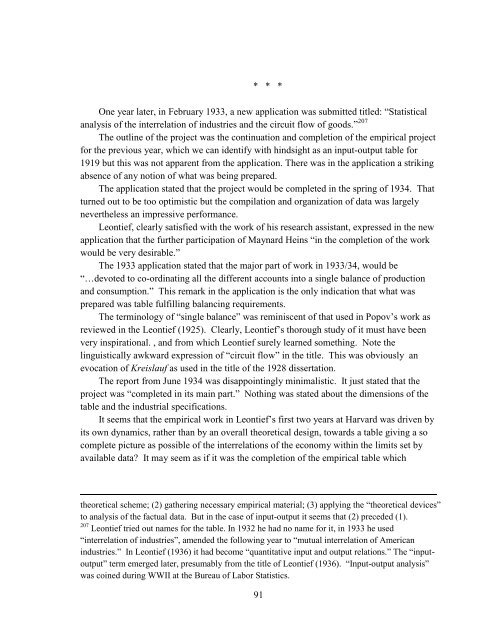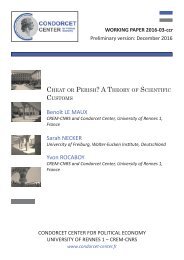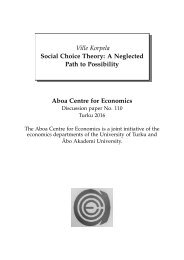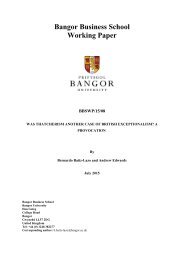MEMORANDUM
n?u=RePEc:hhs:osloec:2016_018&r=hpe
n?u=RePEc:hhs:osloec:2016_018&r=hpe
You also want an ePaper? Increase the reach of your titles
YUMPU automatically turns print PDFs into web optimized ePapers that Google loves.
* * *<br />
One year later, in February 1933, a new application was submitted titled: “Statistical<br />
analysis of the interrelation of industries and the circuit flow of goods.” 207<br />
The outline of the project was the continuation and completion of the empirical project<br />
for the previous year, which we can identify with hindsight as an input-output table for<br />
1919 but this was not apparent from the application. There was in the application a striking<br />
absence of any notion of what was being prepared.<br />
The application stated that the project would be completed in the spring of 1934. That<br />
turned out to be too optimistic but the compilation and organization of data was largely<br />
nevertheless an impressive performance.<br />
Leontief, clearly satisfied with the work of his research assistant, expressed in the new<br />
application that the further participation of Maynard Heins “in the completion of the work<br />
would be very desirable.”<br />
The 1933 application stated that the major part of work in 1933/34, would be<br />
“…devoted to co-ordinating all the different accounts into a single balance of production<br />
and consumption.” This remark in the application is the only indication that what was<br />
prepared was table fulfilling balancing requirements.<br />
The terminology of “single balance” was reminiscent of that used in Popov’s work as<br />
reviewed in the Leontief (1925). Clearly, Leontief’s thorough study of it must have been<br />
very inspirational. , and from which Leontief surely learned something. Note the<br />
linguistically awkward expression of “circuit flow” in the title. This was obviously an<br />
evocation of Kreislauf as used in the title of the 1928 dissertation.<br />
The report from June 1934 was disappointingly minimalistic. It just stated that the<br />
project was “completed in its main part.” Nothing was stated about the dimensions of the<br />
table and the industrial specifications.<br />
It seems that the empirical work in Leontief’s first two years at Harvard was driven by<br />
its own dynamics, rather than by an overall theoretical design, towards a table giving a so<br />
complete picture as possible of the interrelations of the economy within the limits set by<br />
available data? It may seem as if it was the completion of the empirical table which<br />
theoretical scheme; (2) gathering necessary empirical material; (3) applying the “theoretical devices”<br />
to analysis of the factual data. But in the case of input-output it seems that (2) preceded (1).<br />
207 Leontief tried out names for the table. In 1932 he had no name for it, in 1933 he used<br />
“interrelation of industries”, amended the following year to “mutual interrelation of American<br />
industries.” In Leontief (1936) it had become “quantitative input and output relations.” The “inputoutput”<br />
term emerged later, presumably from the title of Leontief (1936). “Input-output analysis”<br />
was coined during WWII at the Bureau of Labor Statistics.<br />
91





